White Lake improvement project
November 20, 2014 Update
The harvesting of the sale began on November 3, 2014 and there are two separate operators on site. Unit 1, located on the north side of the power line, is being cut the old fashion way with a chain saw and John Deere cable skidder and at this time has completed approximately two-thirds of the five acre clear cut abutting the power line. Unit 2 of the sale is being done by mechanize logging using a Tigercat forwarder and a Tigercat cut to length shear to harvest the timber and move it to the log yard for trucking. The operator has almost completed the 6 acre clear cut and they are starting the patch and group harvest. The mechanized crew in Unit 2 anticipates they should be done by late November if the weather remains good.
This timber harvest and wildlife habitat improvement project on 82.6 acres of forestry land will create 26 acres of young forest habitat at White Lake State Park and remove low grade hardwoods to encourage white pines and red oaks to dominate this stand. The Division of Forests and Lands and the Division of Parks and Recreation work cooperatively in the management of 217 State Reservations (State Parks and State Forests). Every parcel is assigned into one of four major categories based on general land use: agricultural lands, conservation easements, forestry lands, and recreation lands. White Lake State Park has 325.2 acres of recreation land and 577.5 acres of forestry land in active forest management. For more information on this project contact Bob Hardy, Forester, 603-796-2323 or robert.hardy@dred.nh.us.
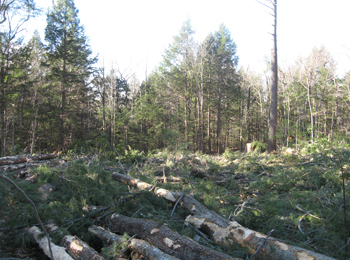
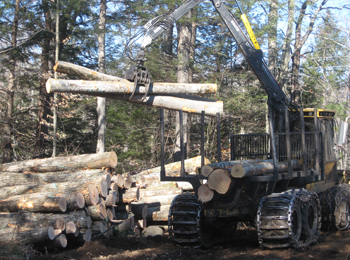
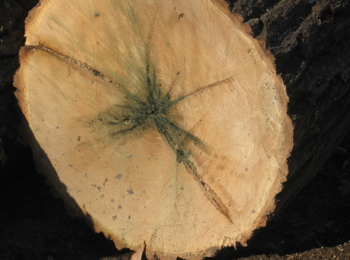
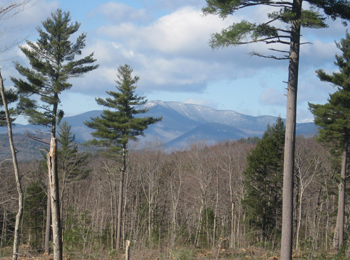
White Lake Forest Management Project Planned
In the late summer of 2013 a timber harvest and wildlife habitat improvement project is planned on 82.6 acres of forestry land that will create 26 acres of young forest habitat at White Lake State Park. The beneficiaries of the wildlife habitat improvement are expected to be mostly songbirds, reptiles, and small mammals several of which are species of concern in the NH Wildlife Action Plan. Birds benefit by the increase in the number of insects and shelter for young chicks. Reptiles and small mammals benefit by enhanced foraging opportunities. Young forest creates additional browse for animals such as deer and moose, and release of raspberries and blueberries for bears to forage. Young Forest Project
The second goal of this harvest is to remove low grade hardwoods. The paper birch in the harvest area has reached maturity, the American beech is infected with beech bark disease, and the red maple was heavily damaged in an ice storm. All these tree species have commercial value as pulp for making paper, chips for generating electricity, and logs for sawing out dimensional lumber, flooring and furniture.
The harvest will also encourage white pines and red oaks to dominate this stand. These tree species tend to live longer and stay healthier than the birches, beech and maples in the current stand. The red oaks also produce large crops of acorns which are an important wildlife food source for many species.
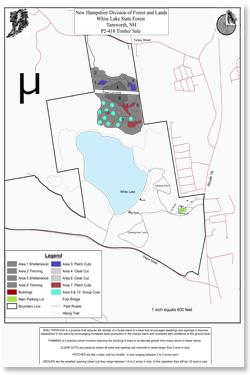
The Division of Forests and Lands and the Division of Parks and Recreation work cooperatively in the management of 217 State Reservations (State Parks and State Forests). Every parcel is assigned into one of four major categories based on general land use: agricultural lands, conservation easements, forestry lands, and recreation lands. White Lake State Park has 325.2 acres of recreation land and 577.5 acres of forestry land in active forest management. For more information on this project contact Bob Hardy, Forester, 603-796-2323 or rhardy@dred.state.nh.us.